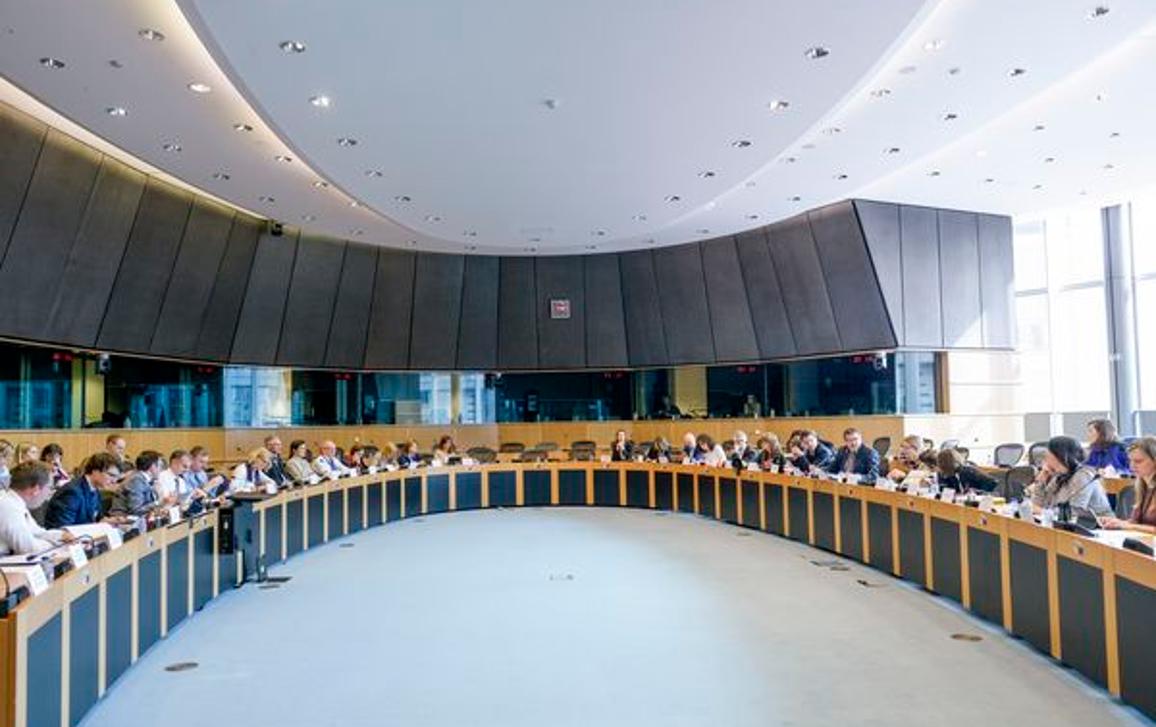
On 2 June 2022, European transport ministers adopted a common position (‘general approach’) on each of the three legislative proposals of the fit for 55 package that relate to the transport sector (alternative fuels infrastructure (AFIR), FuelEU Maritime and ReFuelEU Aviation).
This is an important step in the implementation of the fit for 55 legislative package, which should enable the EU to meet its climate objectives: reducing net greenhouse gas emissions by at least 55% by 2030 compared to 1990 levels and achieving carbon neutrality by 2050. For the transport sector in particular, the objective is to reduce greenhouse gas emissions by 90% (the sector currently accounts for more than a quarter of EU emissions).
Alternative fuels infrastructure (AFIR)
The Council adopted a general approach on the draft regulation on the deployment of alternative fuels infrastructure (AFIR).
The main objective of the proposed regulation is to ensure that the public has access to a sufficient infrastructure network for recharging or refuelling road vehicles or ships with alternative fuels.
It also aims to provide alternative solutions so that ships moored at the quayside and stationary aircraft do not need to keep their engines running.
Lastly, the goal is to achieve full interoperability throughout the EU and to make sure that the infrastructure is easy to use.
The proposed regulation will play an important role in speeding up the deployment of this infrastructure so that the adoption of zero- and low-emission vehicles and ships will not be impeded, initiating a virtuous circle, and enabling the transport sector to significantly reduce its carbon footprint.
The revised rules will send a clear signal to citizens and other stakeholders that user-friendly recharging infrastructure will be installed wherever it is needed, throughout the EU.
The Council’s general approach retains the fundamental aspects of the Commission proposal, i.e. the key overall parameters that will have a real impact on the climate, in particular:
- for recharging light electric vehicles, requirements for the power to be provided, based on the size of the registered fleet and the TEN-T coverage requirements in 2025 and 2030
- for recharging electric heavy-duty vehicles and hydrogen refuelling, requirements for TEN-T coverage by 2030, starting in 2025 for electric heavy-duty vehicles
- for the supply of electricity to ships at the quayside in ports, requirements applicable from 2030
The general approach does, however, amend some aspects of the Commission proposal.
It adapts it to the specific dynamics of the electric heavy-duty vehicle sector: given the developments expected in the immediate future, particularly in recharging standards, and the fact that the market is less developed than for light vehicles, a gradual process of infrastructure deployment, encouraging a corridor approach, has been provided for starting in 2025, with the aim of covering all TEN-T roads by 2030.
To maximise the efficiency of investments in hydrogen refuelling and to adapt to technological developments, the requirements in the text are focused on the deployment of gaseous hydrogen refuelling infrastructure along the TEN-T core network, paying particular attention to urban nodes and multimodal hubs. The Commission will regularly assess developments in this sector in order to adapt and supplement the requirements as necessary.
Adaptations have been made to ensure that electric recharging requirements are compatible with the wide range of circumstances on the ground and that investments are proportionate to needs, allowing some leeway to adapt the total power of electric recharging pools for sections of the TEN-T network where traffic volumes are low, or even to increase the maximum distance between recharging pools for sections with very low traffic.
To make electric recharging and hydrogen refuelling infrastructure easy to use, users’ needs in terms of different payment and price-display options have been fully taken into account, while avoiding disproportionate investment, particularly in existing infrastructure.
As regards on-shore power supply in maritime ports, the provisions have been made fully consistent with the FuelEU Maritime proposal.
The clarity and structure of the text have also been improved to specify the obligations of each stakeholder involved, provide for progress tracking, ensure users are properly informed and supply the industry with common standards and technical specifications.
Finally, to take full account of anticipated significant technological and market developments that will affect heavy-duty vehicles, the general approach includes a clause on a specific review in the short term. The whole text will also be reviewed in the medium term, followed by a regular review.
General approach on alternative fuels infrastructure (AFIR)
Renewable and low-carbon fuels in maritime transport
The Council also adopted a general approach on a proposal to promote the use of renewable and low-carbon fuels in maritime transport (FuelEU Maritime).
The proposal aims to increase demand for and consistent use of renewable and low-carbon fuels in the maritime sector, while ensuring the smooth operation of maritime traffic and avoiding distortions in the internal market. As in the case of air transport, this proposal is key to getting maritime transport on track to meet the EU’s 2030 and 2050 climate targets. The proposal is based on the principle of technology neutrality, given the wide range of technologies used in the maritime sector, and therefore focuses on fuel demand.
The Council’s general approach retains the core aspects of the Commission’s proposal, not least the extent to which it contributes to meeting climate targets. Some notable aspects are as follows:
- The scope, both geographical and in terms of the size of the ships concerned.
- Targets for reducing the greenhouse gas intensity of energy used on board ships.
- The scope of the requirements applicable to on-shore power supply or, for other zero-emission technologies, for ships at the quayside.
- Certification of fuels.
- Governance relating to these new obligations, including the penalties to be applied to companies if their ships do not comply.
The Council’s general approach does, however, amend some aspects of the Commission proposal, in particular:
- The scope of the requirements for on-shore power supply has been revised in order to focus the obligations imposed on ships moored at the quayside, to provide a better framework for the exemptions, to ensure consistency with the AFIR proposal, and to give member states the option to extend the obligations already imposed on ships moored at the quayside to ships at anchorage in ports
- The provisions on the role of companies, verifiers and the public authorities, and on the monitoring, reporting and verification procedures, have been clarified and strengthened with the aim of ensuring a more robust governance system. The work of verifiers is thus more clearly defined and the public authorities can carry out additional checks.
- The provisions on calculating greenhouse gas intensity and the resulting penalties and fines have been revised and made more robust in order to clarify their scope and prevent circumvention of the regulation.
- Some temporary provisions have been added to take account of member states’ specific geographical circumstances (very small islands, remote areas that are highly economically dependent on these transport links), and of navigation in ice conditions. Provisions have also been added for the outermost regions, given their particular status.
- Other provisions – which apply to transhipment ports for container vessels – which were not included in the Commission proposal, have been added to limit carbon leakage. Some member states are particularly exposed to competition from non-EU transhipment ports, given that there is no equivalent standard that applies internationally. These provisions bring more categories of emissions into the scope of the regulation and will thus have a positive impact on the reduction of emissions.
- Lastly, provisions have been added to stimulate demand for the most environmentally friendly sustainable fuels, particularly renewable fuels of non-biological origin (RFNBOs).
General approach on the FuelEU Maritime initiative
Sustainable air transport
The Council adopted its general approach on a proposal aimed at creating a level playing field for a sustainable air transport sector (ReFuelEU Aviation initiative).
The proposal aims to increase both demand for and supply of sustainable aviation fuels (SAF), including synthetic aviation fuels, while ensuring a level playing field across the EU air transport market. It is a major proposal which aims to put air transport on the trajectory of the EU’s climate targets for 2030 and 2050, as SAF are one of the key short- and medium-term levers for decarbonising aviation. It should provide a way out of the situation which is hindering their development: low supply, low demand and prices that are still much higher than fossil fuels.
The Council’s general approach retains the core aspects of the Commission’s proposal, not least the extent to which it contributes to meeting climate targets. Some notable aspects are as follows:
- The obligation for aviation fuel suppliers to ensure that all fuel made available to aircraft operators at EU airports contains a minimum share of SAF from 2025 and, from 2030, a minimum share of synthetic fuels, with both shares increasing progressively until 2050 (blending mandate and sub-mandate). The general approach also foresees an increase in the minimum share for 2030 from 5 to 6%.
- The establishment of a transitional period allowing fuel suppliers to reach the SAF blending mandate as a weighted average of the quantities they have supplied across the Union, in order to facilitate the organisation of the sector during its creation phase, without affecting the overall level of emissions.
- The obligation for aircraft operators to ensure that the yearly quantity of aviation fuel uplifted at a given EU airport is at least 90% of the yearly aviation fuel required, in order to combat tankering.
- Reporting obligations for fuel suppliers and aircraft operators.
- Rules on the competent authorities, to be designated by the Member States to enforce this Regulation, and rules on fines.
However, the Council’s general approach does amend some aspects of the Commission proposal, with a view to facilitating and accelerating the development of SAF, in particular:
- The possibility for member states to apply the draft regulation to airports below a certain traffic threshold.
- The extension of the scope with regard to aircraft operators.
- The extension of the scope of eligible sustainable aviation fuels and synthetic aviation fuels. For biofuels, the scope is extended to other certified biofuels complying with the RED sustainability and emissions saving criteria, up to a maximum of 3%, and with the exception of biofuels from food and feed crops, which are excluded.
- The introduction of national flexibilities that give Member States the possibility to increase their sub-mandate of synthetic fuels at national level, under certain conditions and for a limited period of time.
- The introduction of the possibility for the competent authorities of the Member States to grant an exemption from the tankering provisions for certain flights in the event of serious and recurrent operational difficulties or structural difficulties in the supply of fuel in accordance with identified criteria.
- The introduction of reporting obligations for fuel suppliers and the European Union Aviation Safety Agency on the use of substances that give rise to non-CO2 effects in aviation.
- Data collection and the reporting obligations have been reinforced in order to monitor the effects of this regulation on the competitiveness of EU operators and platforms, and to improve knowledge of the non-CO2 effects of air transport emissions.
- New considerations that the Commission is expected to include in its report in 2027, such as the impact of this regulation on connectivity, on carbon leakage and distortions of competition, and on the future use of hydrogen and electricity.
General approach on ReFuelEU Aviation – the text will be available at a later stage
Next steps
The general approaches adopted on 2 June 2022 will allow the Council presidency to start negotiations with the European Parliament (trilogues) once the European Parliament has adopted its positions on these files.
The press release was released by Council of the European Union on 2nd May 2022



